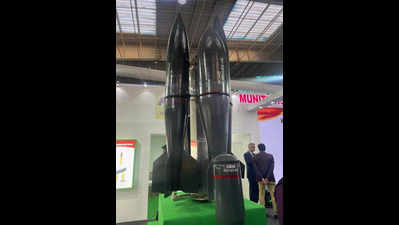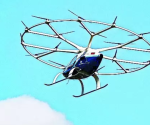Army indigenises products in ammunition & explosives | Bengaluru News

Bengaluru: The army is making significant strides in indigenisation efforts, successfully reducing dependence on foreign imports while strengthening domestic defence-manufacturing capabilities. At Aero India, military officials revealed that the directorate has successfully indigenised 1,025 items critical to army operations, marking a substantial shift toward self-reliance.
For instance, indigenisation of electronic components is managed by the army’s drawings and specification wing (electronics) in Bengaluru, while mechanical parts are also increasingly getting localised. The initiative has created new opportunities for India’s MSME sector and private players, aligning with the govt’s vision for self-reliance in defence manufacturing.
“…Earlier, we relied on imports — scanners, for example, came from Sweden. But when we required modifications or additional space, they couldn’t accommodate our needs. At the same time, import cost of components like turbochargers and distance sensors became economically unviable due to foreign exchange fluctuations and technological upgrades,” said an army personnel deputed at the directorate of indigenisation stall at the show.
The transformation is particularly evident in ammunition production, where Munitions India Ltd reports a dramatic shift from 51:49 foreign-to-indigenous ratio to an impressive 20:80 split, significantly reducing the country’s reliance on external suppliers.
“Our two main objectives are reducing imports and securing a sustainable supply chain for military assets. These vehicles need to remain operational for at least another decade, and indigenisation is proving to be the most effective solution,” the army personnel explained.
Another personnel said the success in ammunition production particularly stands out, while a Munitions India Ltd spokesperson, said: “By indigenising ammunition and explosives, we enhance operational readiness, reduce costs and minimise dependence on global supply chains, ensuring our armed forces have reliable access to essential resources.”
Bengaluru: The army is making significant strides in indigenisation efforts, successfully reducing dependence on foreign imports while strengthening domestic defence-manufacturing capabilities. At Aero India, military officials revealed that the directorate has successfully indigenised 1,025 items critical to army operations, marking a substantial shift toward self-reliance.
For instance, indigenisation of electronic components is managed by the army’s drawings and specification wing (electronics) in Bengaluru, while mechanical parts are also increasingly getting localised. The initiative has created new opportunities for India’s MSME sector and private players, aligning with the govt’s vision for self-reliance in defence manufacturing.
“…Earlier, we relied on imports — scanners, for example, came from Sweden. But when we required modifications or additional space, they couldn’t accommodate our needs. At the same time, import cost of components like turbochargers and distance sensors became economically unviable due to foreign exchange fluctuations and technological upgrades,” said an army personnel deputed at the directorate of indigenisation stall at the show.
The transformation is particularly evident in ammunition production, where Munitions India Ltd reports a dramatic shift from 51:49 foreign-to-indigenous ratio to an impressive 20:80 split, significantly reducing the country’s reliance on external suppliers.
“Our two main objectives are reducing imports and securing a sustainable supply chain for military assets. These vehicles need to remain operational for at least another decade, and indigenisation is proving to be the most effective solution,” the army personnel explained.
Another personnel said the success in ammunition production particularly stands out, while a Munitions India Ltd spokesperson, said: “By indigenising ammunition and explosives, we enhance operational readiness, reduce costs and minimise dependence on global supply chains, ensuring our armed forces have reliable access to essential resources.”
















